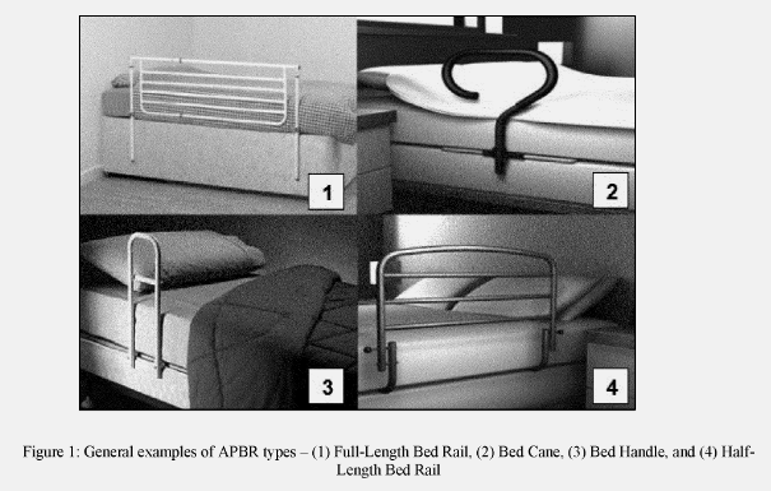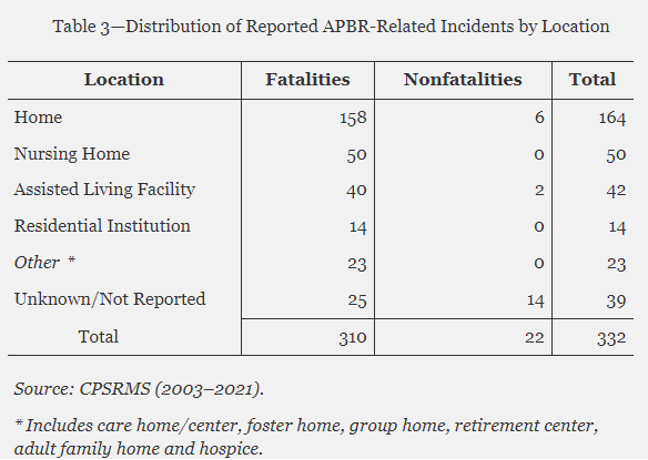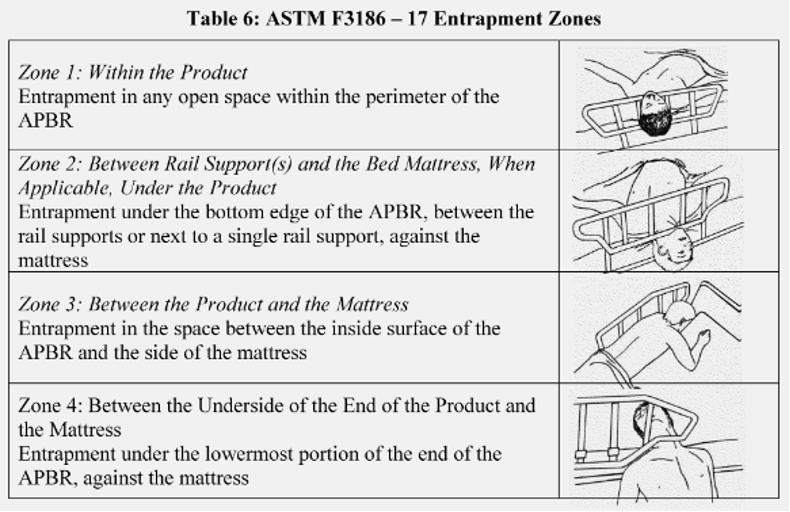Mary Madison, RN, RAC-CT, CDP
Clinical Consultant – Briggs Healthcare
The U.S. Consumer Product Safety Commission (Commission or CPSC) has determined that there is an unreasonable risk of injury and death associated with entrapment and other hazards from adult portable bed rails (APBRs). CPSC has identified 284 fatal incidents related to entrapment by APBRs between January 2003 and December 2021. To address the risk, the Commission is promulgating a rule under the Consumer Product Safety Act (CPSA) to require that APBRs meet the requirements of the existing voluntary standard for APBRs, with modifications. CPSC estimates that the final rule will provide up to $298 million per year in societal benefits, while the costs associated with the rule’s requirements are expected to be approximately $2 million per year.
This Final Rule: 88 FR 46958 was published in the Federal Register on July 21, 2023 and is effective on August 21, 2023.
Several types of bed rails under CPSC jurisdiction are available to consumers. ASTM F3186–17 (section 1.2) describes “portable bed rails and related products” as products installed by consumers and “not designed as part of the bed by the bed manufacturer.” Generally, APBRs within CPSC’s jurisdiction include products that are installed or used alongside a bed by consumers and are intended to reduce the risk of falling from the bed, assist the consumer in repositioning in the bed, or assist the consumer in transitioning into or out of the bed. Figure 1 below shows four common types of APBRs.

Because of the similarity in design and means of attachment to the side of the bed, products intended for both types of uses can present the same potential entrapment hazards, as discussed in section III of this preamble.
In September and October 2021, CPSC staff conducted an online search that identified 12 firms supplying 65 distinct APBR models. Retail prices for the identified APBR models ranged from $38 to $275. Based on an interview with one APBR manufacturer’s representative and market information from the identified APBR models, CPSC staff estimates that in 2021, the mean retail price was $50 per APBR; total market revenues were approximately $9 million; and the number of APBRs sold that year was approximately 180,000 units. See Tab C of the staff’s briefing package for the final rule for additional details.
Approximately 50 percent of all APBR-related incidents and fatalities occurred at home. Other commonly reported locations included nursing homes, assisted living facilities, and residential institutions. Table 3 below shows the frequency of each location reported.

Staff grouped the hazard types into four categories based on the bed rail’s role in the incident. The categories are listed in order of highest to lowest frequency.
• Rail Entrapment: There were 284 fatalities and two not-fatal injuries related to rail entrapment. This category includes incidents in which the victim was caught, stuck, wedged, or trapped between the mattress/bed and the bed rail, between bed rail bars, between a commode and rail, between the floor and rail, between the night table and rail, or between a dresser and rail. Based on the narratives, the most frequently injured body parts were the neck and head.
• Falls: There were 23 deaths, one nonfatal knee fracture, and one non- injury incident related to falls. This category includes incidents in which the victim fell off the bed, fell and hit the bed rail, or hit and fell near the bed rail, and fell after climbing over the bed rail.
• Structural Integrity: There were 11 incidents related to structural component problems (weld of bed rail broke and bed rail not sturdy). This category includes one laceration, one head bump, one bruise, two unspecified injuries, and six non-injury incidents.
• Miscellaneous: There were 10 incidents with miscellaneous problems (hanging on the bed rail after garment got caught, hand, arm, or leg laceration, pinched radial nerve against the bed rail, complaint about a misleading label, complaint about a bed rail that was noncompliant with the ASTM standard, and a claim against a bed rail manufacturer about an unspecified issue). This category includes three deaths, three lacerations, one pinched nerve, one unspecified injury, and two non-injury incidents.
Rail entrapment, the most common hazard pattern among all reported incidents, accounted for more than 90 percent (284 of 310) of the fatal incidents. A review of the In-Depth Investigations (IDIs) [10] showed that the victims were typically found with their torso between the product and the mattress frame, with their neck resting on the lower bar. Three other hazard patterns were also reported: (1) chin resting on the bar; (2) slumped backwards, partially suspended with the thorax lodged and compressed in the gap between the rail and mattress; and (3) slumped through the bar opening. The medical examiners in these cases listed the cause of death as “positional asphyxia,” with an additional list of “underlying factors” or “contributory causes.” Staff’s analysis of the data revealed that the head and neck were the body parts most frequently entrapped, with positional asphyxia (neck against rail) identified as the most common cause of death. Neck compression, with or without airway blockage, can result in death, even when the body remains partially supported, because blood vessels taking blood to and from the brain and the carotid sinuses are located in soft tissues of the neck and are relatively unprotected.
Effectively addressing the entrapment hazard associated with APBRs depends upon, among other things, consumers assembling and installing the product properly. ASTM F3186–17 includes performance requirements intended to improve the likelihood that the APBR will be assembled and installed properly. For example:
- Section 6.1 sets forth a requirement for products to include a retention system, which maintains the installed product in position without requiring readjustment of the components. This retention system must be permanently attached to the APBR once it has been assembled and must not be removable without the use of a tool.
- Section 6.2 includes structural integrity requirements that require the product to withstand testing without deforming or changing dimensions.
- Section 6.5 requires that structural components and retention system components must not be capable of being misassembled, which the standard defines as the APBR being assembled in a way that appears functional but would not meet the retention system (section 6.1), structural integrity (section 6.2), entrapment (section 6.3), or openings (section 6.4) requirements.
The requirement that retention systems be permanently attached to the APBR once it has been assembled, and removable only with a tool, reduces the likelihood that consumers will misplace the retention system and increases the likelihood that consumers, including secondary users, will continue to use the retention system. The requirement that structural and retention system components not be misassembled reduces the risk of injury or death that could arise from the consumer omitting key parts of the APBR ( e.g., a center rail) during assembly, in ways that could result in entrapment or other hazards.

There’s a lot of information in this Final Rule. Please familiarize your team with the requirements of using adult portable bed rails to prevent a tragedy.
